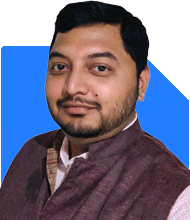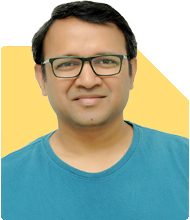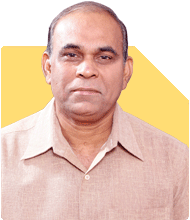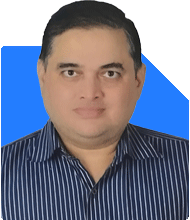
Sir, I am 44 year old and want to retire after 15 years with 20 cr. value in current investing 1.55L in MF SIP in these fund
ADITYA BIRLA SUN LIFE PSU EQUITY FUND - DIRECT PLAN 5000
AXIS BLUECHIP FUND - DIRECT PLAN 0
AXIS MIDCAP FUND - DIRECT PLAN 0
AXIS SMALL CAP FUND - DIRECT PLAN 4000
CANARA ROBECO BLUECHIP EQUITY FUND - DIRECT PLAN 12000
HDFC MULTI CAP FUND - DIRECT PLAN 3000
ICICI PRUDENTIAL BHARAT 22 FOF - DIRECT PLAN 5000
ICICI PRUDENTIAL NIFTY NEXT 50 INDEX FUND - DIRECT PLAN 3000
KOTAK MULTICAP FUND - DIRECT PLAN 4000
MIRAE ASSET LARGE CAP FUND - DIRECT PLAN 4000
MOTILAL OSWAL MIDCAP FUND - DIRECT PLAN 6000
MOTILAL OSWAL NIFTY INDIA DEFENCE INDEX FUND - DIRECT PLAN 10000
NIPPON INDIA LARGE CAP FUND - DIRECT PLAN 10000
NIPPON INDIA MULTI CAP FUND - DIRECT PLAN 4000
NIPPON INDIA SMALL CAP FUND - DIRECT PLAN 5000
PARAG PARIKH FLEXI CAP FUND - DIRECT PLAN 6000
PGIM INDIA FLEXI CAP FUND - DIRECT PLAN 6000
PGIM INDIA MIDCAP OPPORTUNITIES FUND - DIRECT PLAN 4000
QUANT ELSS TAX SAVER FUND - DIRECT PLAN 12500
QUANT INFRASTRUCTURE FUND - DIRECT PLAN 7000
QUANT LARGE AND MID CAP FUND - DIRECT PLAN 6000
QUANT MID CAP FUND - DIRECT PLAN 12000
QUANT SMALL CAP FUND - DIRECT PLAN 7000
SBI CONTRA FUND - DIRECT PLAN 8000
TATA SMALL CAP FUND - DIRECT PLAN 6000
ZERODHA NIFTY LARGEMIDCAP 250 INDEX FUND - DIRECT PLAN 2500
I feel that i am investing in too much fund . Kindly look my above portfolio and suggest to addition and change from these schemes to achieve the mentioned retirement target of 20 Cr. MF. Portfolio after 15 years.
Ans: Assessing Your Current Investment Portfolio
You've established a clear financial goal: accumulating Rs 20 crore by the time you retire in 15 years. To achieve this, you're currently investing Rs 1.55 lakh per month through SIPs in mutual funds. This commitment shows you're serious about your future and willing to take the necessary steps to secure it. However, the number of funds in your portfolio suggests you may be spreading your investments too thin, which could hinder your progress.
Understanding Over-Diversification
Diversification is a cornerstone of investing. It reduces risk by spreading investments across various assets or funds. However, over-diversification occurs when too many investments are made in similar funds or asset classes. This dilutes potential returns and complicates portfolio management. Your portfolio consists of 27 different funds, which is excessive.
The Dangers of Over-Diversification
Fund Overlap: Many funds in your portfolio likely invest in the same or similar stocks, leading to unnecessary redundancy. This doesn’t enhance diversification but rather makes it harder for you to see significant returns.
Management Complexity: With 27 funds, it’s challenging to track each one’s performance. This complexity makes it difficult to make timely adjustments to your portfolio, which is crucial for achieving your long-term goals.
Diluted Returns: When you invest in too many funds, the performance of your best-performing funds gets diluted by the average or poor performance of others. This can drag down your overall returns.
The Need for Streamlining Your Portfolio
To achieve your goal of Rs 20 crore in 15 years, it’s essential to streamline your portfolio. A focused approach will allow you to benefit from the growth potential of carefully selected funds without the drawbacks of over-diversification.
1. Large-Cap Funds: Foundation of Stability and Growth
Current Allocation: You have several large-cap funds in your portfolio, which are known for their stability and lower volatility compared to mid-cap and small-cap funds. However, holding multiple large-cap funds is unnecessary as they often invest in the same blue-chip companies.
Recommended Action: Consolidate your large-cap investments into one or two well-performing funds. This will simplify your portfolio and ensure that your investments are concentrated in the best opportunities within the large-cap space.
Suggested Allocation: Ideally, 25-30% of your portfolio should be allocated to large-cap funds. This allocation provides stability and consistent growth potential, crucial for someone planning retirement in 15 years.
2. Mid-Cap and Small-Cap Funds: Growth Drivers
Current Allocation: Mid-cap and small-cap funds are essential for achieving high growth. However, these funds come with higher risk and volatility. Your portfolio includes multiple mid-cap and small-cap funds, which may lead to overlapping investments.
Recommended Action: Narrow down your mid-cap and small-cap funds to one or two top performers in each category. Focus on funds that have a consistent track record of outperforming their benchmarks.
Suggested Allocation: Allocate 30-40% of your portfolio to a mix of mid-cap and small-cap funds. This will provide the growth potential needed to reach your Rs 20 crore goal while managing the risk associated with these funds.
3. Multi-Cap and Flexi-Cap Funds: Balanced Growth with Flexibility
Current Allocation: Multi-cap and flexi-cap funds offer flexibility by investing across different market capitalizations. Your portfolio has several of these funds, which is a good strategy for diversification. However, having too many can dilute their benefits.
Recommended Action: Consolidate your multi-cap and flexi-cap funds into one or two that have demonstrated consistent performance. These funds should have the ability to adjust their portfolio allocation based on market conditions.
Suggested Allocation: 20-25% of your portfolio should be in multi-cap or flexi-cap funds. This provides a balance between stability and growth, essential for long-term wealth accumulation.
4. Sectoral and Thematic Funds: Tactical Bets for Enhanced Returns
Current Allocation: You’ve invested in sectoral funds like Quant Infrastructure Fund and Motilal Oswal Nifty India Defence Index Fund. These funds can offer high returns but come with increased risk due to their concentrated exposure to specific sectors.
Recommended Action: Limit your exposure to sectoral and thematic funds. These should represent a small portion of your portfolio, used for tactical bets rather than core holdings. Choose sectors you believe will outperform in the long term, but be mindful of the higher volatility.
Suggested Allocation: Restrict sectoral and thematic funds to 5-10% of your portfolio. This ensures that while you can benefit from sectoral growth, the overall portfolio remains stable and diversified.
5. Index Funds: A Reconsideration of Their Role
Current Allocation: Your portfolio includes index funds like Zerodha Nifty LargeMidcap 250 Index Fund and ICICI Prudential Nifty Next 50 Index Fund. While index funds have low expense ratios and provide broad market exposure, they may not always be the best choice, especially when aiming for high growth.
Disadvantages of Index Funds:
Lack of Active Management: Index funds merely replicate the market and do not exploit market inefficiencies. Active fund managers, on the other hand, can outperform the market by selecting stocks based on research and analysis.
Underperformance in Volatile Markets: During market downturns or periods of high volatility, index funds may not protect your capital as well as actively managed funds, which can adjust their portfolios to minimize losses.
Recommended Action: Consider reducing or eliminating your index fund exposure. Instead, focus on actively managed funds that have a track record of outperforming their benchmarks.
Suggested Allocation: If you choose to retain any index funds, limit them to no more than 5% of your portfolio. The majority of your investments should be in actively managed funds with the potential for higher returns.
Building an Ideal Portfolio for Your Retirement Goal
To achieve your Rs 20 crore target in 15 years, it’s essential to build a portfolio that is both diversified and focused. Here’s a suggested portfolio structure that aligns with your risk profile, time horizon, and return expectations:
1. Large-Cap Funds (25-30% of Portfolio):
Retain 1-2 high-performing large-cap funds. These funds should have a history of consistent returns and lower volatility.
Why Large-Cap Funds? They provide stability and steady growth, essential as you approach retirement. Large-cap funds invest in established companies with strong track records, making them a safer bet.
2. Mid-Cap Funds (20-25% of Portfolio):
Retain 1-2 mid-cap funds that have shown resilience and consistent growth over the years.
Why Mid-Cap Funds? Mid-cap funds offer a good balance between risk and return. They invest in companies with the potential to become large-caps in the future, providing higher growth opportunities.
3. Small-Cap Funds (15-20% of Portfolio):
Retain 1-2 small-cap funds that have consistently outperformed their benchmarks.
Why Small-Cap Funds? Small-cap funds are riskier but can deliver significant returns over the long term. They are suitable for the growth portion of your portfolio, especially given your 15-year time horizon.
4. Flexi-Cap Funds (20-25% of Portfolio):
Retain 1-2 flexi-cap funds with a strong performance history. These funds should have the flexibility to invest across market capitalizations.
Why Flexi-Cap Funds? Flexi-cap funds provide a balanced approach to investing, with the flexibility to adjust to market conditions. This makes them a valuable part of your portfolio.
5. Sectoral/Thematic Funds (5-10% of Portfolio):
Retain only 1-2 sectoral funds that align with your long-term views.
Why Sectoral Funds? Sectoral funds can provide high returns, but they come with higher risk. By limiting exposure, you can benefit from sectoral growth without exposing your portfolio to excessive risk.
6. Index Funds (Up to 5% of Portfolio):
If you wish to retain any index funds, limit them to a small portion of your portfolio.
Why Limit Index Funds? Index funds offer market returns but lack the ability to outperform. Given your aggressive growth target, actively managed funds may serve you better.
Final Insights
Your goal of accumulating Rs 20 crore by retirement is ambitious but achievable with the right strategy. By consolidating and focusing your investments, you can maximize returns while managing risk effectively. Here’s a summary of the steps you should take:
Consolidate large-cap funds: Merge similar funds to avoid redundancy and simplify management.
Focus on mid-cap and small-cap funds: Select the top performers in each category to drive growth.
Streamline multi-cap/flexi-cap funds: Keep the best performers and ensure they have the flexibility to adapt to market changes.
Limit sectoral funds: Use them for tactical investments but keep their exposure low to manage risk.
Reduce index fund exposure: Consider actively managed funds for their potential to outperform, especially in volatile markets.
By implementing these changes, you’ll not only simplify your portfolio but also enhance its performance potential. This streamlined approach will help you stay on track to achieve your retirement goal of Rs 20 crore in 15 years.
Investing is a long-term commitment, and regular reviews of your portfolio are essential to ensure it remains aligned with your goals. As you get closer to retirement, consider gradually shifting your portfolio towards more stable investments to protect your capital. However, for now, an aggressive yet focused strategy is key to reaching your ambitious financial goal.
Remember, every investment decision should be made with a clear understanding of your risk tolerance, time horizon, and financial objectives. By staying disciplined and focused, you can build the wealth you need to enjoy a comfortable retirement.
Best Regards,
K. Ramalingam, MBA, CFP,
Chief Financial Planner,
www.holisticinvestment.in


























